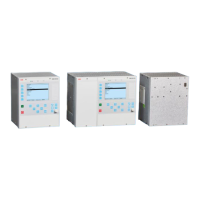Section 3 1MRK 500 124-UEN
HMI500
12 Operation Manual
Distributed busbar protection REB500
3.3.4 Window structure
The structure and handling of the windows in the operator program is similar to
other Windows applications.
Figure 3 Dialog buttons
Table 1 summarizes the meaning of buttons that appear in many dialogs:
Table 1 Meaning of common buttons in dialogs
Button Description
OK The new settings are saved in the database on the PC and the dialog closes.
Apply The new settings are saved in the database on the PC and the dialog stays open.
Restore The changes that have been made are ignored and the old settings restored. The
dialog stays open.
Cancel The new settings are not saved and the dialog closes.
Scroll (arrow)
buttons
In windows permitting the selection of several bays (or isolators, circuit-breakers
etc.), there are four scroll buttons at the bottom for scrolling through the bays.
Close The window or dialog is closed and a warning is displayed, if changes have been
made which have not been saved.
In many dialogs for setting parameters, there are two tabs:
• Overview: Lists all bays and enables selecting one.
• Details: Shows the settings.
You can view the details of a bay by double-clicking on the bay in Overview or by
selecting the bay and clicking on Details.
3.3.5 Main window
The title bar is at the top of the main program window and displays the station
name. The menu bar is located immediately below the title bar.

